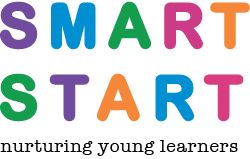SMART START's core curriculum places a large emphasis on S.T.E.A.M (science, technology, engineering, art & math). Educating young learners on these subjects allows them to formulate ideas, develop critical thinking, learn how to problem solve, explore, make discoveries, instill inventiveness and so much more!
Read about our recent science unit below🧪
To commence our stem studies, students put on their lab coats and welcomed Doc V., a science educator and his years of expertise for an interactive microbiology lesson. The class was introduced to the concept of DNA and participated in a hands-on extraction study. Pupils were provided their own strawberries, test tubes, magnifying glasses and other materials. All successfully conducted the experiment and took home their very own test tube full of strawberry DNA! Click here for experiment instructions 🍓
Eager engineers excitedly opened their Snap Circuits: Electric Circuit Kit (Linked Here!) Peers pondered over the instruction manual and constructed numerous designs to create sounds through electric currents. Patience and preciseness were utilized as each circuit must be properly connected for the electricity to pass through. This activity serves as an excellent introduction to physics lesson!
SMART START Scientists engaged in a Science Fair at school! All brought in a S.T.E.A.M related item to put on display. Each classmate had the opportunity to introduce their exhibits: binoculars, hand-made invention, rock collection, star machine, habitat art, glass cased insects, plant roots, space board and a slime experiment.! After the presentations, inquisitive minds used magnifying glasses to explore the exhibition.
Mini meteorologists studied the weather and its changes throughout the summer season. Weather wheels and posters were utilized to teach about different cloud types. We discussed each clouds title and what role they play in the atmosphere. Friends were most fascinated by the Nimbostratus, a dark grey cloud that produces rain and snow!
We hope you enjoyed reading all about science at SMART START!
🔍SMART START🔎

















































